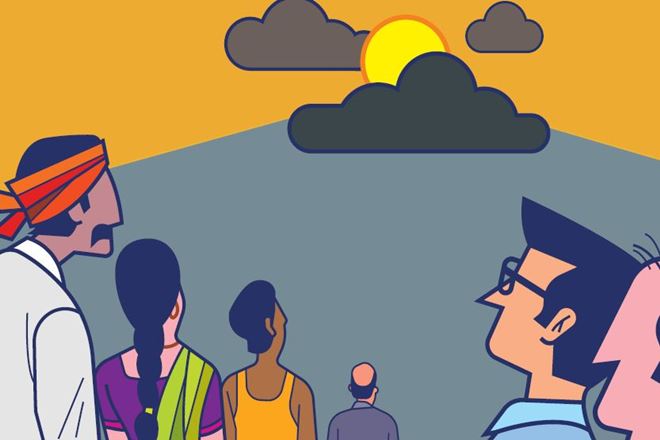If India’s mood in the summer of 2014 was one of hope, today, it is probably one that is closer to despair. Small traders and farmers are probably the most distraught, but, across the country, the spectre of rising joblessness in a slowing economy has left other sections of the population too feeling insecure.
To be fair, five years of the NDA-2 have made life easier for the under-privileged; the many welfare schemes—Ujjwala, Swachh Bharat, Ayushman Bharat—as also efforts to electrify more villages, provide farmers with cheap insurance and protect people against accidents, would no doubt have brought the poor relief. Also, the progress on digitisation and DBT has ensured money moved into the right hands and the Jan Dhan accounts have furthered inclusion.
But, with the key construction and manufacturing sectors under-performing, not enough jobs have been created. The Make-in-India initiative remains a non-starter with manufacturing as a share of GDP having risen just 80 basis points in four years. Moreover, the government lost an opportunity to catalyse the economy by blocking out FDI in multi-brand retail.

The severe shortage of jobs might not have hurt as much had demonetisation not thrown the country’s smallest businesses so completely out of gear, causing thousands to lose their livelihoods. Had small enterprises been able to get back on their feet, there could have been more job opportunities. But close on the heels of DeMo, came the GST. It was a great step forward for the country and an excellent tax reform that has resulted in better compliance that will pay off in the future. But it needed to have been rolled out after a lot more preparation. Coming as it did within a
year of demonetisation, it only exacerbated the pain.
The worst off today are probably farmers; in the absence of marketing support and a coherent export policy, they have been left to dump their produce on the streets. Agriculture was one area which the NDA could have worked on, given most states were, till very recently, ruled by the BJP. But rather than reform, states resorted to loan waivers. And, the Centre failed to come up with a good export policy.
It is true the NDA inherited an economy that was virtually in a shambles—near-empty coffers, high inflation, NPA-ridden banks—and in the first two years, the rains played truant. Also, an over-leveraged corporate sector had little wherewithal to invest. Small businesses suffered because interest rates didn’t come off meaningfully; one reason for this was the government’s inability to lower rates on small savings. But it did get a windfall from the crash in the prices of crude oil.
The biggest feather in the NDA cap would have to be the IBC—Insolvency and Bankruptcy Code—a seminal piece of legislation and one that has given back banks their rights, taking away from errant promoters what was not rightfully theirs. While the government deserves more than full credit for the IBC, it needed to have been more careful while framing regulations for sectors such as telecom—the policies have all but wiped out telcos—and oil&gas where more incentives were needed. Again, the NDA’s UDAY is a far better attempt at cleaning up SEBs than the UPA’s Financial Restructuring Package.
The average GDP growth of 7.3% in four years masks the extent of distress in the economy. Sluggish sales of homes and two-wheelers speak of reluctant consumers and low private sector sector capex of cautious investors. Neither can be good for the country.


